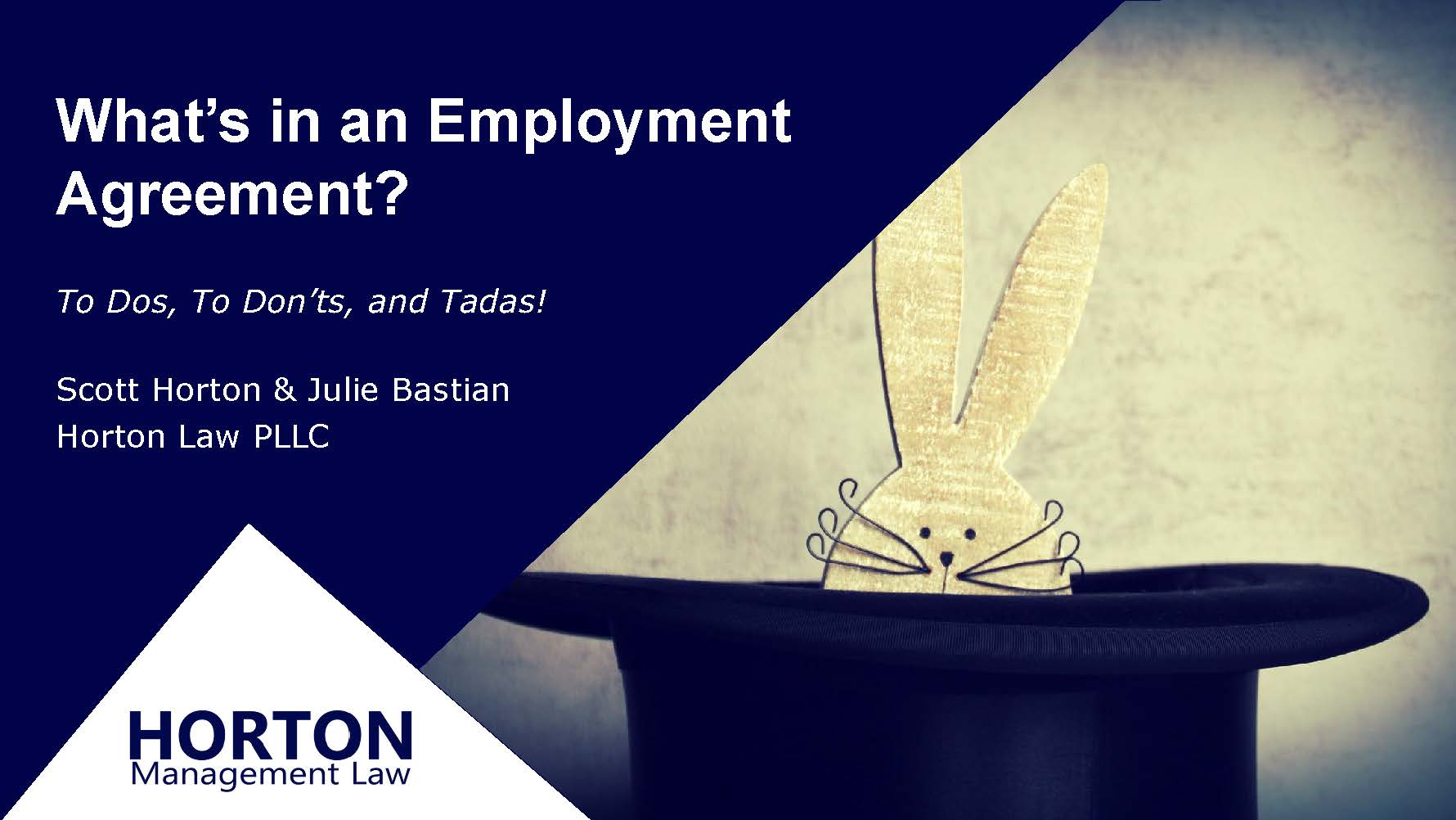On March 18, 2020, Congress passed and President Trump signed the Families First Coronavirus Response Act. This legislation includes an Emergency Paid Sick Leave Act and amendments to the Family and Medical Leave Act, along with corresponding tax credits. These provisions give some employees the right to up to 12 weeks of paid leave related to the public health emergency caused by the novel coronavirus. These COVID-19 leave entitlements will be in place beginning April 2, 2020, and end December 31, 2020.
Emergency Paid Sick Leave
The Emergency Paid Sick Leave Act gives employees the right to take up to 80 hours (less for part-time employees) for certain COVID-19 related conditions.
This sick leave is in addition to any other sick leave available to employees under employer plans or other laws. Employers cannot require employees to use other forms of paid leave before this emergency paid sick leave.
Covered Employers
The law applies to all public (governmental) employers and private employers with fewer than 500 employees.
However, employers of health care providers or emergency responders can choose to excuse those employees from the sick leave requirements.
The law also gives the Secretary of Labor the right to issue regulations that further limit the coverage, including:
- to exclude health care providers and emergency responders; and
- to exempt small businesses with fewer than 50 employees from the requirement to provide paid sick leave to employees to care for children whose schools are closed or child care is unavailable.
Hopefully, the Department of Labor will issue any such regulations before April 2nd.
Qualifying Conditions
Employees of covered employees can take sick leave when the employee is:
- subject to a Federal, State, or local quarantine or isolation order related to COVID-19;
- advised by a health care provider to self-quarantine due to concerns related to COVID-19;
- experiencing symptoms of COVID-19 and seeking a medical diagnosis;
- caring for an individual who is subject to a quarantine or isolation order;
- caring for a son or daughter if their school has been closed or their child care provider is unavailable due to COVID-19 precautions; and
- experiencing any other substantially similar condition specified by the Secretary of Health and Human Services in consultation with the Secretary of the Treasury and the Secretary of Labor.
Duration of Leave
Full-time employees will be eligible to take up to 80 hours of paid sick leave for the above circumstances.
Part-time employees can take up to the average number of hours they work in two weeks
The law does not clarify who qualifies as a full- vs. part-time employee. However, it seems like anyone who averages 40 hours or more could take up to 80 hours of leave. Employees who average less than that would get the number of hours they average in two weeks.
For part-time employees whose hours vary, employers should calculate the average number of hours the employee was scheduled to work over the past 6-months (dating back from the start of the paid sick time). Or if the employee didn’t work in the past 6 months, use the employee’s reasonable expectation of hours at the time of hiring.
Amount of Pay
Employers must pay employees on paid COVID-19 sick leave based on their “regular rate of pay” under the FLSA (assuming it is above minimum wage). There is some uncertainty about exactly what that would mean in the case of employees who receive compensation beyond base hourly and salary rates. For example, some non-discretionary bonuses and commission payments apparently would need to be factored in.
Employees will receive 100 percent of the lost wages as so determined when the leave is based on the employee’s own health situation (conditions 1-3 above). When the leave is to care for others (conditions 4-6 above), the employee will receive two-thirds of that amount.
Sick leave pay under the law is capped at $511 per day ($5,110 total) when the leave is based on the employee’s own health situation (conditions 1-3 above). The cap is lower, $200 per day ($2,000 total), when the employee needs to care for others (conditions 4-6 above).
Additional Conditions
Before the law takes effect, the Department of Labor will issue a model notice for employers to post. The notice will advise employees of the requirements of the Emergency Paid Sick Leave Act.
Employers who do not provide the required paid sick leave will be liable for the unpaid leave benefits plus additional penalties available for violations of the Fair Labor Standards Act.
Employers may not discriminate against employees who take paid sick leave related to COVID-19 or require employees to find coverage for their shifts.
The law only stays in effect until December 31, 2020. Thus, not surprisingly, there is no carryover of unused paid sick leave. Employers do not have to pay out unused leave under this law upon separation from employment.
Emergency Family and Medical Leave Expansion Act
This legislation temporarily amends the FMLA only until December 31, 2020. While in effect, it provides a combination of paid and unpaid leave related to COVID-19 issues.
Covered Employers
The pre-existing FMLA unpaid leave requirements effectively only apply to employers with at least 50 employees. The new COVID-19 leave provisions will apply to private (non-government) employers with less than 500 employees, as well as all government entities.
The law also gives the Secretary of Labor the right to issue regulations that further limit the coverage, including:
- to exclude health care providers and emergency responders; and
- to exempt small businesses with fewer than 50 employees when the imposition of the new requirements would jeopardize the viability of the business as a going concern.
It also appears employees generally can’t sue employers with less than 50 employees for coronavirus-related FMLA violations. But the U.S. Department of Labor presumably could still enforce the law against them if it doesn’t adopt an applicable exemption.
Covered Employees
The FMLA has previously only afforded leave to employees who have been employed with their current employer for at least a year. The employee must also have worked for at least 1250 hours in the past 12-months and work within 75 miles of at least 50 other employees of their employer.
The new COVID-19 leave provisions will apply to all employees of covered employers who have been with the organization for at least 30 days.
Note that these amendments do not change the coverage and eligibility requirements for the standard FMLA leave categories.
Employers may choose not to permit employees who are health care providers or emergency responders to take this form of FMLA leave.
New COVID-19 Leave Category
For the rest of 2020, the FMLA will allow up to 12 weeks of leave “because of a qualifying need related to a public health emergency.”
This leave is limited to a situation where an employee is unable to work or telework because of a need to care for their minor child whose school or place of care has been closed or their child care provider is unavailable due to a declared COVID-19 emergency.
Employees who experience coronavirus symptoms or need to care for a family member with a serious health condition related to COVID-19 may still be eligible for leave under pre-existing FMLA provisions. However, they will not qualify under this new category. As a result, they will not be eligible for paid FMLA leave. Nor will they be eligible unless they meet the broader employer and employee coverage requirements that still apply to the other leave circumstances.
Any time taken for this new form of leave will apply toward the 12 weeks of total annual leave that a qualifying employee can take under the FMLA.
Paid FMLA Leave Related to COVID-19
The first two weeks (10 days) of leave taken to care for children out of school can be unpaid. Employees have the right to use any other accrued vacation, personal, medical, or sick leave during that time. In some cases, that will include the new emergency sick leave discussed above.
After the first 10 days, the employer must pay employees for additional leave up to the 12 weeks allowed.
Employers must pay at least two-thirds of the employee’s regular rate of pay (as discussed above regarding paid sick leave). However, the paid FMLA leave cannot exceed $200 per day or $10,000 total for an employee.
Reinstatement Rights
In some cases, employees who take this new form of FMLA leave will have different job restoration rights than those using other types of FMLA leave.
Employers with less than 25 employees do not have to allow an employee to return to work from leave taken to care for children whose schools are closed if:
- the position no longer exists due to economic conditions or other changes in operating conditions of the employer that affect employment and are caused by a COVID-19 public health emergency during the leave;
- the employer makes reasonable efforts to restore the employee to an equivalent position with equivalent pay and benefits; and
- if the employee could not be initially reinstated to an equivalent position, the employer makes reasonable efforts to contact the employee if an equivalent position later becomes available.
Tax Credits
The Families First Coronavirus Response Act includes tax credits to enable private (non-government) employers to recoup their costs of providing these new forms of paid COVID-19 leave.
First, employers will obtain a credit against their quarterly payroll taxes equal to the full amount of wages paid under the Emergency Paid Sick Leave and the Emergency Family and Medical Leave Expansion Act. If the credit exceeds the amount of taxes due from an employer, the employer will receive a refund in the amount of any excess credit. The IRS should issue further guidance regarding these tax credits.
Second, employers will not pay the 6.2% payroll tax on the wages they pay to employees as sick leave or paid family leave to satisfy these new requirements.
Employers should consult with their tax advisors for more details on the potential tax implications in their specific situations.
Next Steps for Employers
Public employers and private employers with less than 500 employees must start planning for compliance with these new requirements by April 2, 2020. If nothing else, most schools are or will be closed between now and then. This reality will give many employees the basis for FMLA leave.
We expect additional guidance from the Department of Labor. One big question is which additional employers and employees will be exempt from coverage. Ideally, we will have these answers before employers must start complying with the law. But employers cannot rely on any delays in regulations to put off compliance.
Eventually, employers will have to post a notice regarding the new paid sick leave requirements. New FMLA notices and other related documents will likely also be necessary. Again, it would be best for the DOL to provide these quickly. However, that might prove challenging under current circumstances.
For our latest updates related to coronavirus and other employment law issues, follow Horton Law on LinkedIn.


